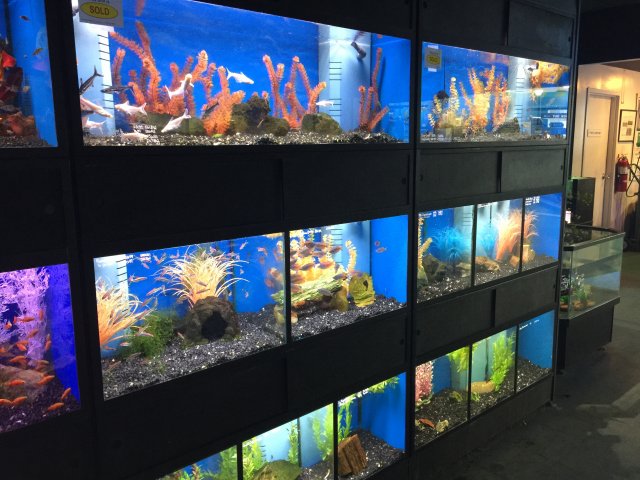I think you have a few options here.
First, since all of the tanks are completely separate, you could add an additional bulkhead at the top of each one that can be used as the overflow drain for the drip system. Then, you could run tubing off of a main line to each tank and put a needle valve on each one so that you can control the flow. This would allow you to drip more into a particular tank that is a bit heavier stocked and drip less into lighter stocked tanks. It would also allow you to shut the drip off in the case that a particular tank is not currently in use. Lastly, it would allow each tank to remain completely separate of the others, but this also means that each tank needs its own heater and filter, and will need a heater large enough to keep up with the cold water drip.
The other option is to remove the "sponge" filters from the tank and use the bulkheads to connect the tanks to a central sump system. Then, you could run one common drip into the sumps pump chamber and have the drip overflow in the sumps inlet chamber. This way all of the new water would immediately be pushed to the tanks and the old water would exit out the overflow. This would give less adjustability but would only require one set of heaters and one filtration setup. You wouldn't really be able to shut any of the tanks down that easily and all of the tanks would be on one system, so sickness would spread to all tanks.
There are pros and cons to both setups and I honestly can't tell you which one you would like better, or which one would be harder to setup. You also don't have to keep the original sponge type filters. If you keep all tanks separate, I'm sure you can hook up canisters to the bulkheads that are on the tanks.




